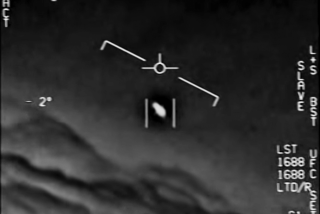BOOK REVIEW : Guide to the Cosmos for the Earthbound
- Share via
One of the most perplexing mysteries of modern publishing is the phenomenal success of cosmologist Stephen Hawking’s “A Brief History of Time.” Generally acknowledged to be one of the most widely unread best-selling books of our time, it remained on the New York Times bestseller list for two years--surely a record for a science book written by a scientist.
Now, along comes another, far more inviting book on the same subject--where the universe came from and where it is headed--by another Ph.D. astrophysicist.
For the reader who, like this reviewer, approaches such a book with the same butterflies in the stomach as he feels before diving off a three-meter board, “Unveiling the Edge of Time” is a great relief. Unlike Hawking’s brilliant but forbidding tour de force, John Gribbin’s book is accessible, lucid and fun, while being no less brilliant than Hawking’s book, at least as viewed by this Earthbound observer.
The author of several popular books on physics, Gribbin earned his Ph.D. in the same intellectual crucible as Hawking did--Cambridge University’s astronomy department. Yet, unlike his more famous colleague, Gribbin can still remember how it felt to be entirely ignorant of the most basic facts concerning the stars and planets.
To prepare the reader for his excursion into black holes, white holes and wormholes, Gribbin begins his journey where modern physics began: with Newton’s discovery of the force of gravity and its effect on planetary motion.
After a whirlwind tour of the 300 years of physics dividing Newton from the present theoreticians, Gribbin devotes most of the book to current cosmological thought. Physicists now generally agree that black holes are regions of space where gravity is so strong that nothing--not even light--can escape. The gravitational field of a black hole is so powerful that light moving outward from it loses all its energy.
A white hole, Gribbin says, is the hypothetical counterpart to a black hole. That is, in a black hole, matter collapses inward; in a white hole, matter pours out. There are some similarities, Gribbin says, between a white hole and the Big Bang in which the universe was born.
Perhaps the most important concept in Gribbin’s book, though, is the wormhole, a term for a hypothetical tunnel through spacetime linking not only a black hole to a white hole, but one universe to another. Theoretically, humans could use a wormhole to travel faster than the speed of light, rendering insignificant the stupefying distances otherwise involved in space travel.
The hypothetical wormhole, conventionally rendered in science fiction as a “stargate,” fascinates science fiction writers, including planetary astronomer Carl Sagan.
According to Gribbin, Sagan engaged some Caltech astrophysicists to concoct a credible wormhole for his novel “Contact.” The Caltech scientists came through brilliantly for Sagan, engineering a theoretical wormhole that humans could keep propped open.
While Gribbin occasionally condescends (e.g., “Stars are really bigger than planets; they only look like points of light, instead of disks, because they are so far away.”), he usually makes mind-stretching phenomena seem homey.
If you’ve ever wondered, for example, how a new universe could be born, here’s one way: “A baby universe could be pinching itself off and inflating to become a real, grown-up universe in the room you are sitting in, right now, and you would never notice, because the only evidence that the new universe existed would be the mouth of the quantum wormhole, a black hole far smaller than a proton, making a tiny pucker in the fabric of spacetime somewhere in your room.”
Astrophysics, no matter how well described, is hard science indeed. But reading Gribbin on the subject makes this reviewer feel like a child allowed to stay up late.
UNVEILING THE EDGE OF TIME Black Holes, White Holes, Wormholes by John Gribbin Harmony Books (Crown) $20; 244 pages
More to Read
Sign up for our Book Club newsletter
Get the latest news, events and more from the Los Angeles Times Book Club, and help us get L.A. reading and talking.
You may occasionally receive promotional content from the Los Angeles Times.










